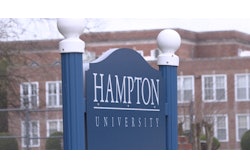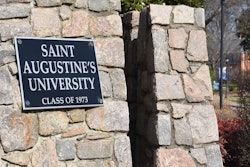President Barack Obama’s $787 billion stimulus spending package was supposed to move “shovel-ready” construction projects, including campus facilities, toward completion.
However, stimulus spending so far has been focused on financial aid and tax credits, less so on speeding up brick-and-mortar projects on college campuses. The recovery spending also has been hamstrung by delays; only about 14 percent of the money approved in the American Recovery and Reinvestment Act (ARRA) has been spent since it was approved in February, according to press accounts.
Even so, a major portion of the funding is about to hit the higher-education community, says Robert Helland, government services adviser at the Washington, D.C., office of the international law firm Reed Smith. “The opportunities are going to go fast and furious, including for historically Black colleges and universities,” he says.
About half of some $32.6 billion in stimulus funds earmarked to stabilize schools should be reaching states whose governors will then dole out money to save college teachers’ jobs and prevent layoffs caused by the recession, says Helland, noting that discretionary state stimulus spending could benefit public HBCUs.
Such funding has already been used to ease the fiscal crisis in California. Badly wracked by unemployment and lower tax revenues because of tanking real estate, the state legislature has recently cut $2.8 billion in higher-education spending to make up a $26 billion budget shortfall.
Although tuitions have seen emergency hikes and staff and courses have been cut back, California politicians believe that they can make up part of the college cuts with $1.1 billion in stimulus money from the stabilization fund. Other hard-hit states such as Michigan are trying to do the same thing.
Much of the ARRA funding earmarked for higher education, however, is going to help students pay tuition. The law has boosted funding for Pell Grants for low-income students by $7 billion, and $14 billion more will help borrowers with tuition tax credits, according to U.S. Department of Education spokeswoman Stephanie Baybak.
Dr. Antonio R. Flores, president of the Hispanic Association of Colleges and Universities, says using stimulus dollars in this manner will greatly benefit Latino students, providing much-needed assistance to pay for college.
“The stimulus is going to be very helpful for Latino students especially in troubled states like California,” he says.
About $100 billion has been earmarked for all levels of education, and some of it will go to community colleges because they can play an immediate role in the nation’s economic recovery.
In southeastern North Carolina, for example, Cape Fear and Brunswick community colleges are getting $500,000 between them to enhance job-training programs that can be completed in six months or less. Cape Fear was notified late this summer that it was getting $300,000 to develop programs for truck drivers, customer service representatives and nursing aides.
“The idea is to accelerate training for jobs that can be of immediate help to the economic recovery,” Cape Fear spokesman David Harding says.
Although first reports on how stimulus money has been spent are not due at the Department of Education until October, observers believe the funds will start to make a big impact at colleges soon.
“Most of the applications were due for acceptance or rejection by the end of July, and they may be running a bit behind,” Helland says. But the pace is really going to accelerate since any money approved will have to be spent by September 2010.















